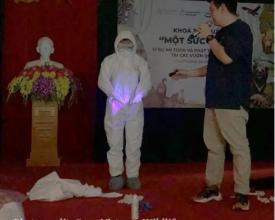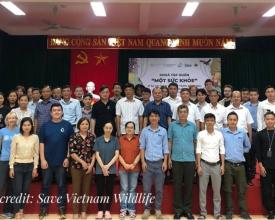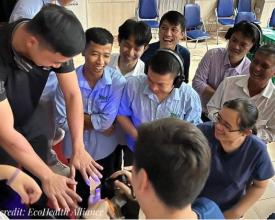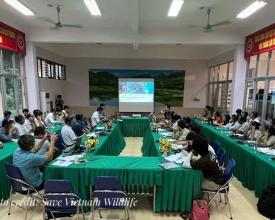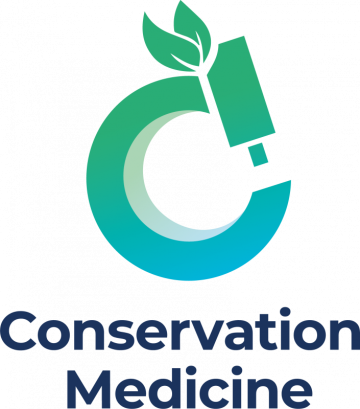
Training on Disease Prevention, Detection, Response and Recovery for Protected Area Managers in Vietnam
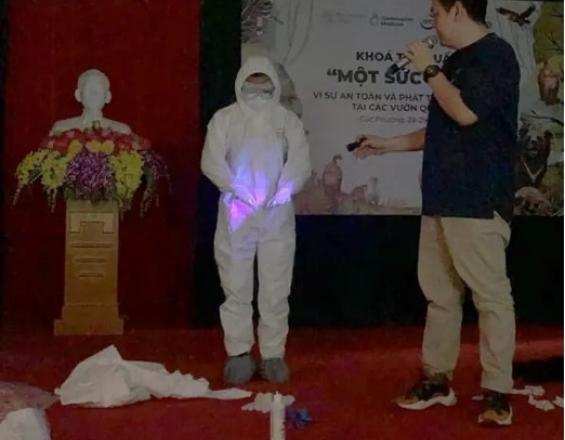
In September 2022 a training was held in Vietnam’s Cúc Phương National Park on the recently developed IUCN guidance on Prevention, Detection, Response and Recovery from Disease Risks in Protected and Conserved Areas and accompanying One Health Principles for Sustainable Tourism. The training was designed for professionals, wildlife handlers and park rangers to introduce the One Health concept, IUCN guidance, sampling, human safety, risk assessment, biosafety, personal protective equipment (PPE), and biohazard waste disposal. Forty participants from Cát Tiên, Pù Mát and Cúc Phương National Parks took part in the two-day training. The field experience and expertise of the training team and adaptation to the relevant context ensured practical application of the guidance. Sessions such as the ‘Glo Germ’ test, demonstrating the importance of proper PPE donning and doffing and handwashing procedures, helped make the training interactive and reinforce key concepts.
Impacts
Prior to the training, most participants were unfamiliar with the concept of One Health and were unaware of the zoonotic diseases carried by bats, rodents, non-human primates, and small mammals. After the presentations, they identified risks that are present in their daily work routine. Recognizing that some biosafety measures had already been implemented in their rescue centres and national parks (e.g. setting up quarantine areas, PPE stations prior to entering the animal cages, and safe distance while observing wildlife in the centre), participants saw the need to revisit existing protocols to ensure they meet the standard biosafety requirements. In addition, risk assessment scenarios allowed participants to build their practical experience in conducting risk assessments for activities at their rescue centre or national park. A pre- and post-training exam was administered to measure participants’ understanding of the theories and techniques taught over the two days, finding a marked improvement while also identifying key opportunities for further training and implementation. Members of the rescue centre and national park management staff who attended the training expressed an interest in following the IUCN guidelines in the future.
